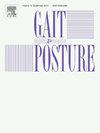The production of muscle power of hip, knee and ankle joints and postural control performance is associated with MiniBESTest tasks in older adults
IF 2.2
3区 医学
Q3 NEUROSCIENCES
引用次数: 0
Abstract
Background
Aging causes an increase in risk of falling. It is important to adapt balance assessment instruments and muscle power for clinical practice.
Research question
What is the relationship of muscle power and postural with MiniBESTest postural tasks in older adults?
Methods
This study included 61 older adults. An isokinetic dynamometer was used to evaluate the movements: hip and knee flexion and extension, and ankle dorsiflexion and plantar flexion. Postural control was assessed using a force platform under the following conditions: semi-tandem base on rigid surface with eyes open and closed; semi-tandem base on unstable surface with eyes open and closed. The MiniBESTest was applied to evaluate their clinical balance.
Results
The logistic regression analysis showed the association of amplitude of center of pressure (COP) displacement on AP and ML directions and total mean velocity on the sub-items of the MiniBESTest. Moreover, the average power of the hip, knee, and ankle joints also showed association over MiniBESTest tasks.
Significance
The association between COP variables and the MiniBESTest indicate that the higher the score in the items, the lower the sway values of the older adults. Furthermore, the association of muscle function and the MiniBESTest tasks indicates that the higher the score in the items, the higher the muscle power of the older adults.
求助全文
约1分钟内获得全文
求助全文
来源期刊

Gait & posture
医学-神经科学
CiteScore
4.70
自引率
12.50%
发文量
616
审稿时长
6 months
期刊介绍:
Gait & Posture is a vehicle for the publication of up-to-date basic and clinical research on all aspects of locomotion and balance.
The topics covered include: Techniques for the measurement of gait and posture, and the standardization of results presentation; Studies of normal and pathological gait; Treatment of gait and postural abnormalities; Biomechanical and theoretical approaches to gait and posture; Mathematical models of joint and muscle mechanics; Neurological and musculoskeletal function in gait and posture; The evolution of upright posture and bipedal locomotion; Adaptations of carrying loads, walking on uneven surfaces, climbing stairs etc; spinal biomechanics only if they are directly related to gait and/or posture and are of general interest to our readers; The effect of aging and development on gait and posture; Psychological and cultural aspects of gait; Patient education.
 求助内容:
求助内容: 应助结果提醒方式:
应助结果提醒方式:


